Power Supplies
The power supply shown below (figure 49) is fairly typical of those used in schools.
The yellow sockets provide an alternating current (ac) output while the black and red ones a direct current (dc). The difference between ac and dc is explained below. The power supply shown has a rotary control for selecting the desired voltage but you should not take what is written on the scale as gospel. Neither should it be assumed that the power supply is working properly just because the on/off light is illuminated.
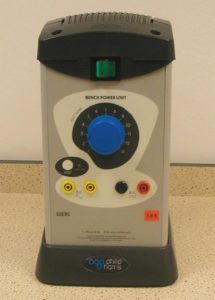
Figure 49. Typical power supply.
7.1 Alternating Current (ac) and Direct Current (dc)
Electric charges (electrons) moving in a circuit connected to the dc sockets of a power supply always move in the same direction – i.e. from the black socket (negative) round the circuit towards the red socket (positive). The same would happen if you had a battery connected to your circuit. The electrons would move from the negative side of the battery round the circuit towards the positive side.
Charges in a circuit connected to the yellow ac sockets change direction, going one way, then the other and then back to their original direction 50 times per second. The number of complete changes per second is known as Frequency and is measured in Hertz. The frequency of the above circuit would be 50Hz.
7.2 Rectification
The UK mains supply is rated at 230 V ac. A power supply has to make this voltage into one that is safe for pupil use. If a dc output is required, the power supply must also be able to turn ac into dc. This is called Rectification and is illustrated in the oscilloscope traces below.
As stated previously, most power supplies take the mains voltage of 230 V ac and bring it down (using a transformer) to a safe level for use in experiments.
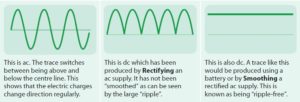
7.3 Voltage Loss
Most school power supplies turn ac into dc using components called rectifiers or diodes and this will lead to a loss of voltage. If you set your power supply to, say, 6 V, you may well get an output of 6 V from the ac sockets but only around 4 V from the dc sockets. Some power supplies have two scales on their selectors, one for ac and one for dc.
Others have information on their casings about the voltage difference between the two sets of sockets.
7.4 Regulated Power Supplies
In many power supplies (and all batteries), drawing current causes a small voltage drop. The larger the current drawn, the greater the drop in voltage
(as illustrated in the video clip). This does not happen with a regulated power supply (figure 50). Its output remains steady.
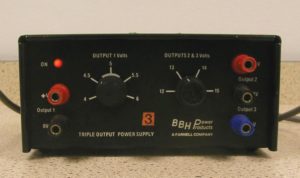
Figure 50. Regulated Power Supply.
This power supply is also smoothed. These features make it suitable for use with electronic circuits. The sockets on the right provide a dual rail output.
This is used for circuits known as operational amplifi ers (op amps).
7.5 Protection
School power supplies are often protected against misuse. Figure 51 shows the reset button on a Unilab power supply. It ‘pops out’ if too much current is drawn.
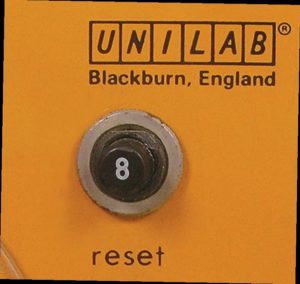
Figure 51. Reset button
Should this happen, switch off, disconnect the circuit, check the circuit to see what was overloading the power supply, wait for a minute and push it back in again.
The same power supply also has a mains fuse (figure 52).
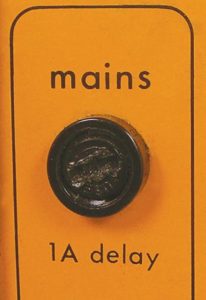
Figure 52. Mains fuse.
